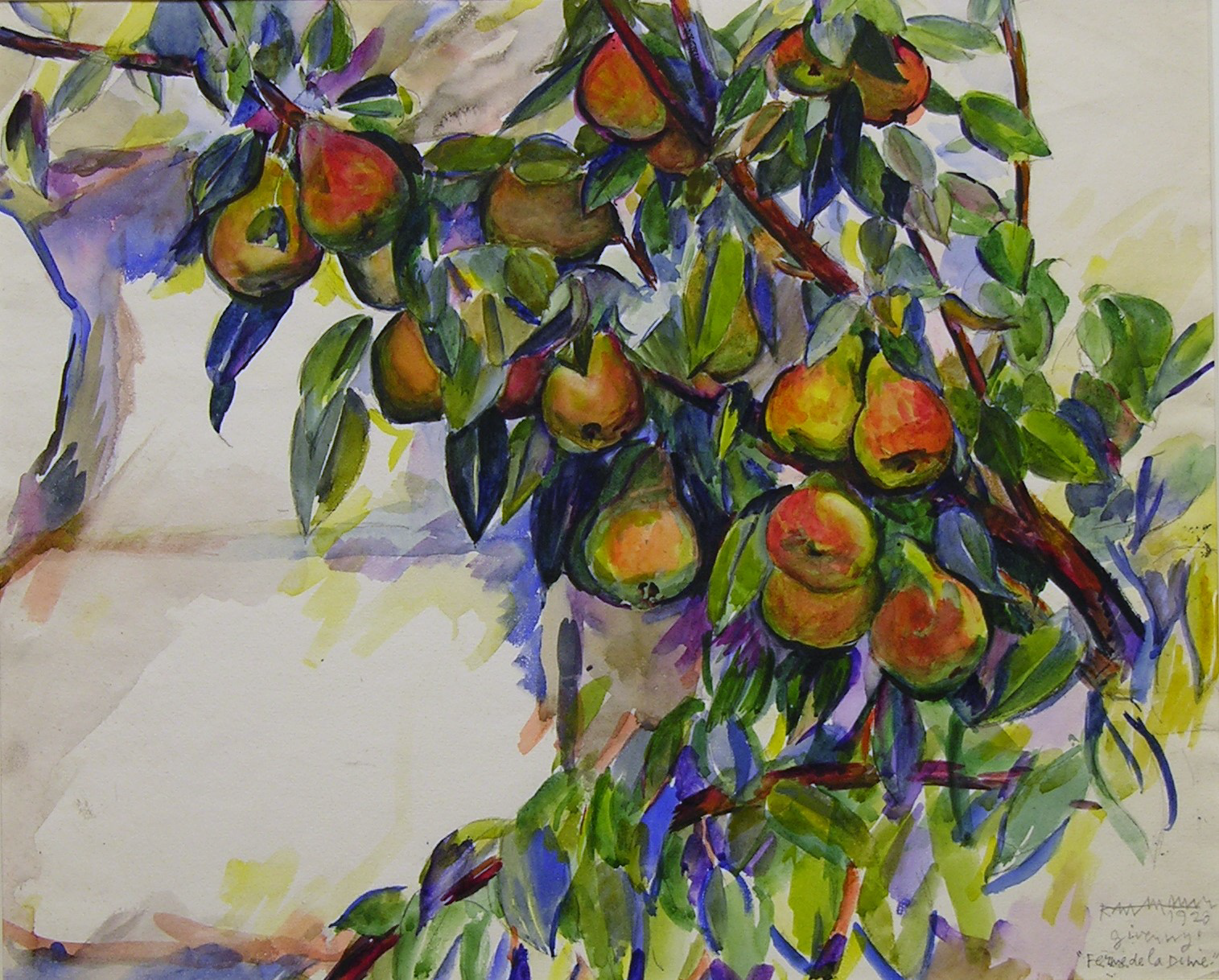Abraham Rattner: French Watercolors
Rattner Permanent Collection Gallery
Ongoing
Throughout his career, Abraham Rattner (1893-1978) was driven by an inner need to create. He was rarely without art-making materials and often worked in the medium of watercolor because of its ease and immediacy. As a colorist, Rattner also enjoyed the luminosity of watercolor for capturing the spirit of light. Highlighted in this exhibition are watercolors from Rattner’s early career, which document his travels throughout France in the 1920s and 1930s.
Rattner was first exposed to the medium of watercolor while studying at the Pennsylvania Academy of the Fine Arts (PAFA) in Philadelphia between 1916 and 1919, which was interrupted in 1917 by his service in the U.S. Army during World War I. PAFA embraced Impressionism and plein air (painting outdoors) painting as a serious artistic expression. During Rattner’s time there, his teacher, Arthur B. Carles, and PAFA created the Chester Springs Summer Campus to help students learn to paint landscapes in an outdoor setting. This learning experience had a profound effect on Rattner.
In 1919, Rattner received a Cresson Traveling Scholarship from PAFA that allowed him to continue his art studies in Europe. He remained in Paris, France, for the next 19 years until the events leading up to World War II forced him to return to the United States. Although Rattner exhibited his oil paintings in the French salons, he continued to paint watercolors to record his many travels. Rattner’s documentations, from steerage passengers on trans-Atlantic crossings, to his time spent living in Giverny, to vacations on the Brittany coast and trips to the Mediterranean island of Corsica, are an important reflection of his time in Europe.
Upon returning to the United States, Rattner continued to use watercolor to document his travels and he encouraged others to experiment with the medium, including writer and friend Henry Miller. Throughout the 1940s and 1950s, he created watercolor studies to mockup designs for the large architectural commissions he received. In the 1960s and 1970s, Rattner’s attention turned to social issues and his use of the medium in bold brushstrokes expressed his feelings about the civil rights movement and anti-war protests. In 1971, he documented the historic prize fight between Muhammed Ali and Joe Frazier in a large series of watercolors, which captured the energy and essence of the match and further defined his commitment to watercolor as fine art medium.
(Image: Abraham Rattner, Ferme de la Dime (Tenth of the Harvest Farm), Giverny, France, 1920, watercolor, 14 1/16 x 18 5/16 in., Leepa-Rattner Museum of Art, St. Petersburg College, Adopt-a-Masterpiece Mr. and Mrs. Roger and Lila Kumar, 1997.1.1.38)

